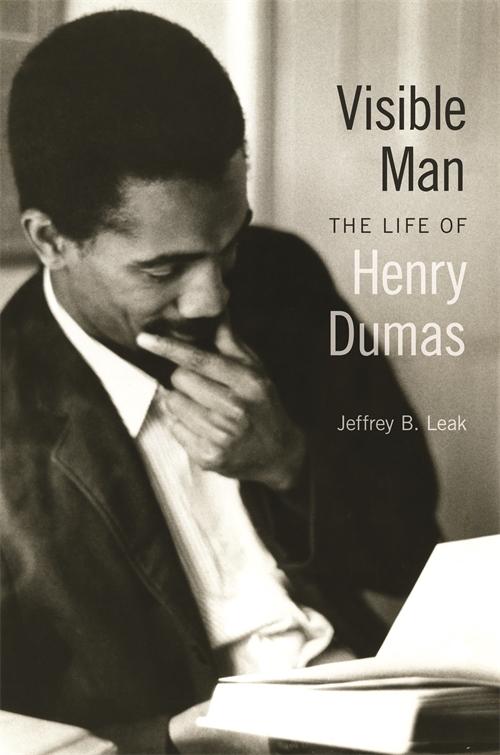In Case You Missed It Part 10: A Selection of Recent Acquisitions
The Acquisitions crew is back again with another subjective selection of recent arrivals, new and old, that caught our eye but may not have received prominent reviews or publicity. The books here were culled from the many that arrived late summer into the autumn, so we hope to return to this space soon with another list.
You can peruse previous ICYMI installments here, but nothing beats slowly scanning our monthly new books lists (except, of course, browsing the stacks). The lists are available on the website and in the Library. Each contains 175 – 250 titles, and hopefully something for every reader in our membership. See the current list here.
Go directly to: LITERATURE, POETRY, MEMOIR | FICTION | SCIENCE | HISTORY | WAR, INTELLIGENCE & ESPIONAGE | TRAVEL | ART | PERFORMING ARTS |
LITERATURE, POETRY, MEMOIR
England in the Age of Austen | Jeremy Black & Jane Austen, Early and Late | Freya Johnston
Let's begin with a couple of new ones for the many Jane Austen admirers among our membership. Jeremy Black is Emeritus Professor of History at the University of Exeter and has written extensively on the history of England. In his latest book, he guides readers “through the drawing rooms, chapels, and battlefields of the time in which Austen lived and wrote...providing a historical context for a deeper appreciation of Austen’s novels.” Freya Johnston is University Lecturer and Tutorial Fellow in English at St. Anne's College, University of Oxford. In Jane Austen, Early and Late, published by Princeton University Press, she reconsiders Austen’s earliest writings and makes the case that they should be viewed as more than just inconsequential juvenilia, posing the question of whether it makes sense to speak of an early and a late Austen at all. Publisher’s Weekly: “Students and devotees of Austen will appreciate the light shed on a lesser-known part of her career.”
Selected Poems | Marsden Hartley
In addition to being considered one of the foremost American painters of the first half of the 20th-century, Marsden Hartley (1877-1943) also published three collections of poetry that have mostly been out of print over the decades (and until recently had eluded our librarians). His poems, although little known, are well-regarded by those who know about them. Here is Allen Ginsberg on Hartley’s poetry:
“...it was recommended that I should look at his poetry, because I was looking for examples of free-form poetry in English, and Marsden Hartley was one of the first, and one of the most loose, relaxed, and straightforward natural poets that ever wrote in this form. It’s one of the rare examples of real “free” verse, where the guy is writing very directly and straightforwardly with an eye on the object. Doing what (William Carlos) Williams and (Ezra) Pound and (Charles) Reznikoff always wanted to do, but he was a painter and he just did it. He wrote so naturally and so intelligently that it was immediately recognized by Williams and his friends as being great, but a book of his never came out until 1945.”
The Heroine with 1,001 Faces | Maria Tatar (ebook available)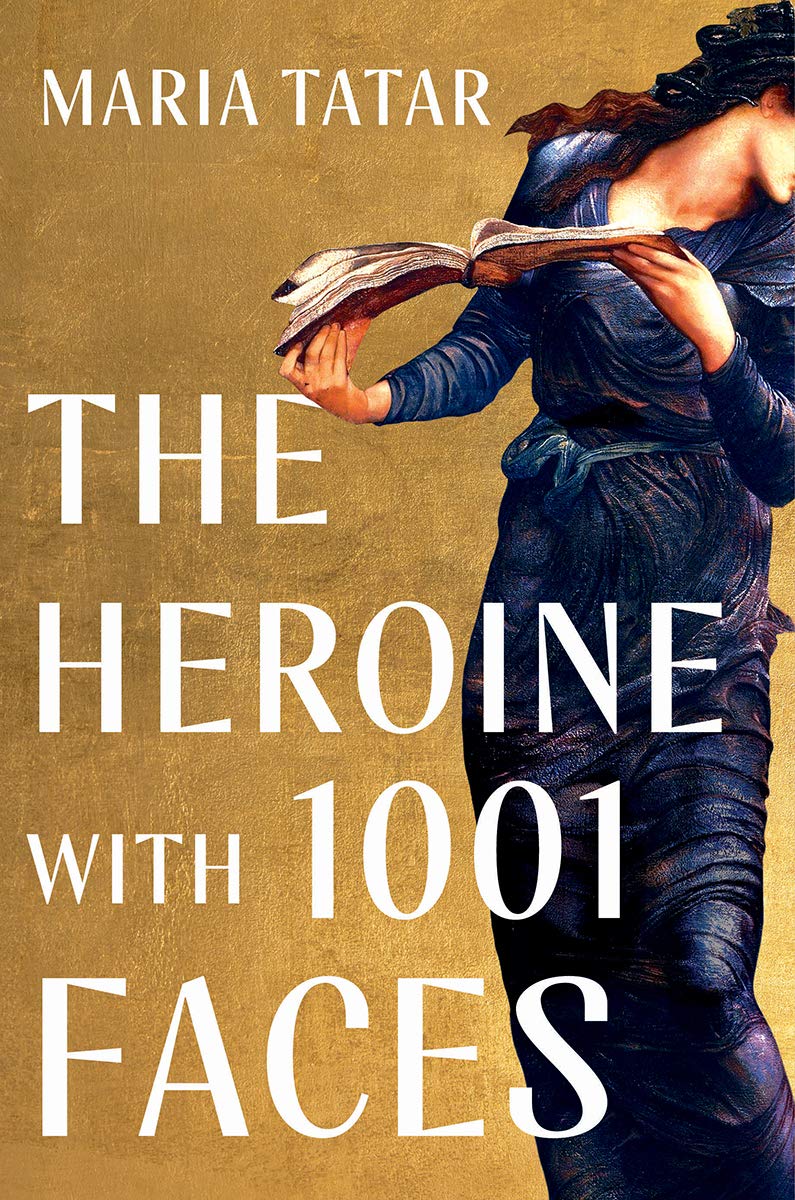
Tatar is a Harvard University professor and has written prolifically on folklore and mythology. (The Library has several of her books.) In her latest, she has devised a counterpart to Joseph Campbell’s influential work on comparative mythology, The Hero with a Thousand Faces. All of the heroes in Campbell’s 1949 work are male, and in a recent interview with the New York Times, Tatar described her project more as a sequel to his work than a rebuttal or counternarrative. Tatar begins with a revision of the meaning of heroism, exploring women's reinvention of the concept to embrace empathy, compassion, and care, and the pursuit of social justice. In this framework, she examines a wide range of examples, from antiquity through the 21st century. Tatar also highlights the importance of mythology in the work of specific writers like Margaret Atwood, Angela Carter, Toni Morrison, and Anne Sexton. Booklist calls it “vast and impressive...impeccably researched.” In this list of book recommendations, NYSL staff member Marialuisa Monda described it as a “must-read” and “a reminder of how transcendent storytelling is.”
Wonderworks: The 25 Most Powerful Innovations in the History of Literature | Angus Fletcher
The Los Angeles Review of Books:
“Angus Fletcher’s breathtaking book attempts to explain... why a string of written words in a novel or story or poem can create a powerful emotional response, or possibly more important, why some strings achieve it so much more effectively than others. With degrees in both English Literature and Neuroscience, Dr. Fletcher explores the intersection of two fields that, on their face, have little overlap… His book follows a linear and roughly chronological narrative of literary innovation from the standpoint of a reader’s emotional response...”
If you want to learn more about this intriguing book, the text above was excerpted from “What Is Literature For?: A Symposium on Angus Fletcher’s Wonderworks,” recently published in The Los Angeles Review of Books. Angus Fletcher will speak about his book at this Library livestream event on March 10.
Visible Man: The Life of Henry Dumas | Jeffrey B. Leak
We featured Henry Dumas in ICYMI-9, highlighting two recently acquired anthologies of fiction and poetry. In 1968, Henry Dumas was killed by police on a New York subway platform at age 33. What he published during his short life earned him a devoted following and is considered a vital part of the Black Arts Movement. Toni Morrison said his work was "some of the most beautiful, moving, and profound poetry and fiction that I have ever in my life read.” Choice praises: “In this beautifully written biography of African American poet and fiction writer Henry Dumas (1934-68), Leak transports readers back to Depression-era rural Arkansas in the 1930s, the promise and excitement of Harlem in the 1940s and 1950s, and the turbulent racial politics of the 1960s.”
Lost Gay Novels: A Reference Guide to Fifty Works from the First Half of the Twentieth Century | Anthony Slide
Anthony Slide followed every lead he could to turn up the 50 novels discussed here. Lost Gay Novels provides plot summaries and reviews of 50 novels from 1917 – 1950 that are not widely known or are not discussed for their gay subject matter. Some writers are well known, but not noted for homosexual themes, like James M. Cain, John Buchan, and Rex Stout. Most, however, will be unfamiliar to anyone who picks this up. The book is not exhaustive, but rather it covers books with different outlooks on homosexuality and gay issues and the context of their times. Curiosities abound among the list and perhaps most surprisingly, a real pre-Stonewall gay sensibility emerges from their stories.
B-side Books: Essays on Forgotten Favorites (edited by John Plotz)
Forty essays by forty writers and scholars about forty unjustly neglected works: “the books that slipped through the cracks, went unread, missed their rightful appointment with posterity...that were ahead of their times or behind their times or on a whole different schedule than the rest of the universe.” Thirty-five of the forty featured books are waiting for you in the Society Library stacks. Forgotten? Perhaps. But gone? No. The remaining five are currently under investigation.
Still Mad: American Women Writers and the Feminist Imagination, 1950-2020 | Sandra M. Gilbert and Susan Guba
Forty years after their first groundbreaking, influential work of feminist literary theory, The Madwoman in the Attic, Sandra M. Gilbert and Susan Gubar map the literary history of feminism's second wave. Gilbert and Gubar trace the evolution of feminist literature though Sylvia Plath, Betty Friedan, Joan Didion, Diane di Prima, Lorraine Hansberry, Audre Lorde, Judith Butler, Alison Bechdel, Claudia Rankine, N. K. Jemisin, Margaret Atwood, Kate Millett, Adrienne Rich, Ursula K. Le Guin, Maxine Hong Kingston, Susan Sontag, Gloria Anzaldúa, Toni Morrison, and others.
Love's Shadow | Paul A. Bové
“At once a lament for the decline of the humanities and a manifesto on how to save them” (Boston Globe). Love’s Shadow is Bove’s three-step manifesto for a new literary criticism that risks sentimentality and melodrama and eschews self-consciousness. Bove asks that critics and scholars put aside passivity and cynicism; choose poetry over philosophy and essay over thesis and dissertation. His call for revolution in criticism embraces poetry and literature for their evidence of human imagination and survival. Publisher’s Weekly: “Bové’s close readings make for a critical tour de force. This passionate call offers a refreshing contribution to the philosophy of criticism.” Paul Bové is a professor of English at the University of Pittsburgh; the book is published by Harvard University Press. Read more about it in The Boston Globe.
Drafted: a Memoir of the ‘60s | Heywood Gould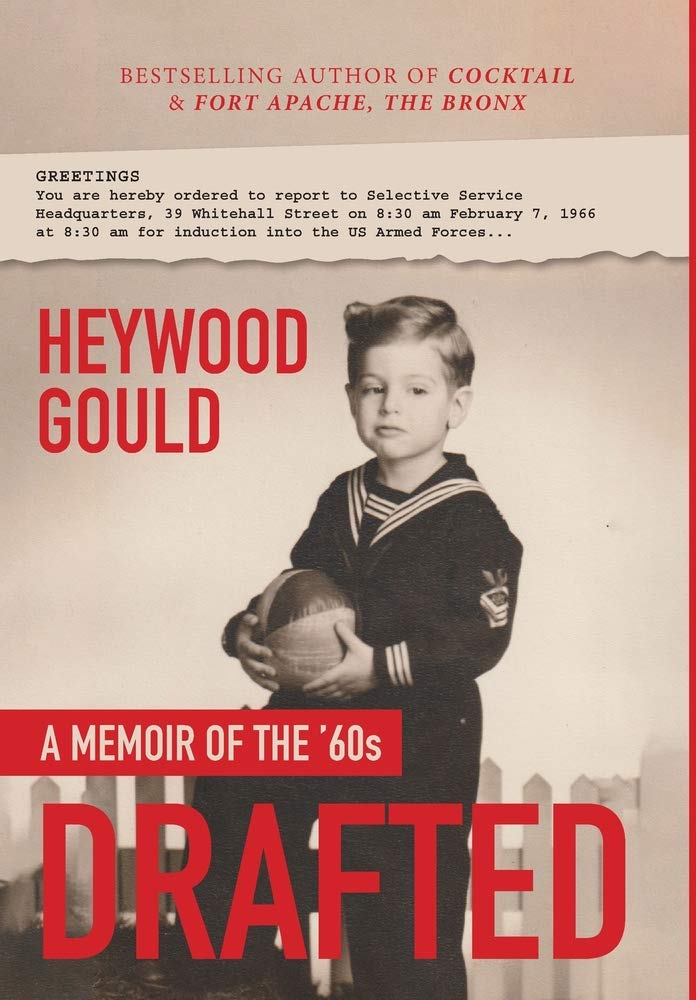
Screenwriter, director, and novelist Gould cuts back and forth between vivid scenes of his early childhood and coming of age in New York City in the 1960's. In 1966, Gould lands his dream job at the New York Post, working alongside young writers like Nora Ephron and Pete Hamill, and covering all manner of New York scandals and excitement for the paper. Around the same time, that dreaded letter from the draft board arrives and the terrifying possibility of being sent to Vietnam is now very real. Deeply committed to getting out of the draft (employing bogus shrink’s notes, urine test deception, and more), he remains torn between his objection of the war and a nagging sense of loyalty to his patriotic family of Jewish immigrants who fought in WWII. Drafted is laugh out loud funny, its anecdotes packed with perfectly-chosen details, and is a vivid, loving portrait of New York drawn by a young man living in the boroughs in the mid-20th century.
Messing About in Boats | Michael Hofmann
Hofmann is an acclaimed poet and has translated over 80 works in German (Joseph Roth, Kafka, Bernhard, Junger, etc.). Based on the author’s Clarendon lectures, this volume offers close readings of four poems in German, French, Italian, and English, by Rainer Maria Rilke, Arthur Rimbaud, Eugenio Montale, and Karen Solie. All four poems touch on the subject of boats, and Hofmann’s analysis explores an affinity between boats and poems. The TLS: “Their linguistic and thematic differences allow Hofmann to cover a broad spectrum in his discussions, which intrigue, illuminate and occasionally perplex the reader. These lectures are a welcome antidote to the skim-reading our age has forced on us.”
Living Nations, Living Words: An Anthology of First Peoples Poetry (collected and with an introduction by Joy Harjo)
Joy Harjo is the first Native poet to serve as U.S. Poet Laureate. This anthology gathers work from dozens of poets, both established and emerging, and offers a thematic sampling of Native American poetry today. Booklist: “Harjo's historically important project for American poetry belongs in every collection.”
How High? That High | Diane Williams
Williams has been called "the godmother of flash fiction” by The Paris Review, and a “magician of the miniature” by Kirkus. Influential but somewhat under the radar, experimental yet accessible, it is tempting to describe Williams with that vague, dooming praise “writer’s writer.” Speaking of which, Lydia Davis said in a New York Times interview that her work is “intriguing and provocative in its departures from the societal norm or the expected...It is often bizarre and funny, sometimes disturbing.” Jonathan Franzen: “one of the true living heroes of the American avant-garde.” How High? That High is Williams’ tenth collection and includes 34 pieces in 128 pages. Kirkus praises: “These pieces pack a punch. Brief, elliptical, steeped in longing—or is that lust?—they offer slices of life that rely on interior more than exterior details, which is to say they are small road maps of the soul.”
Daddy was a Number Runner | Louise Merriweather (foreword by James Baldwin) 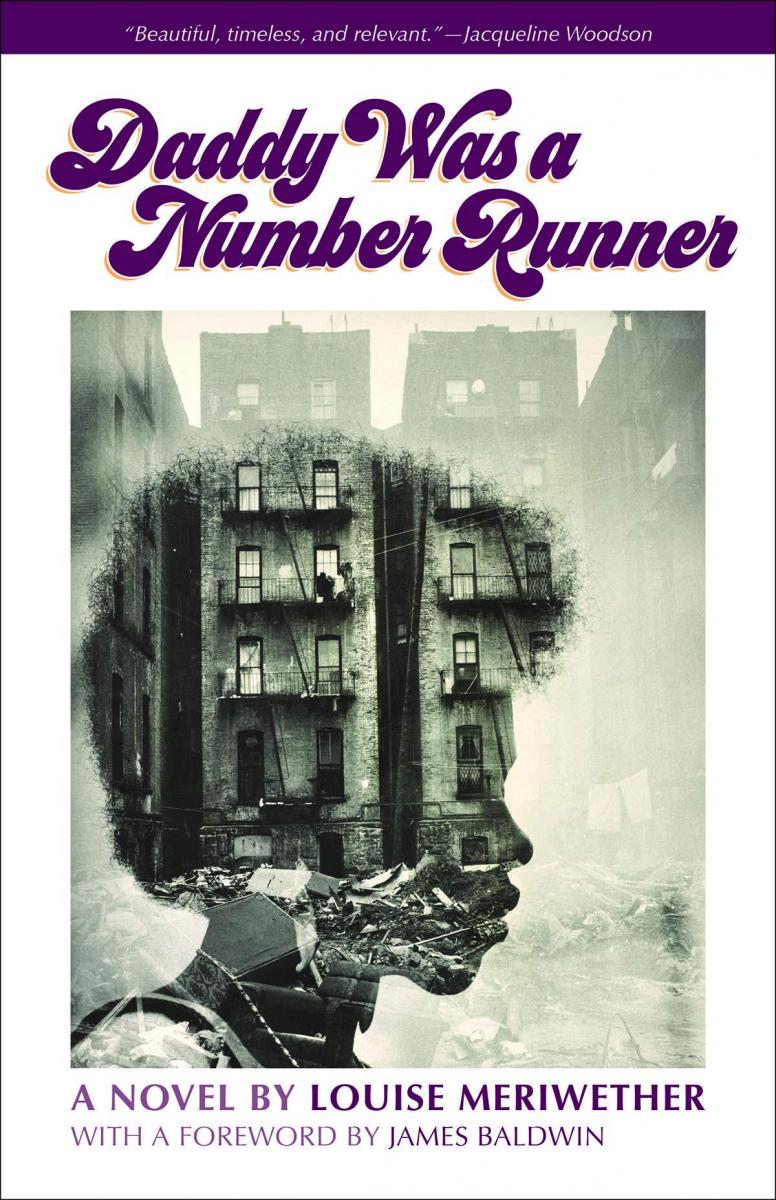
"The novel’s greatest achievement lies in the strong sense of black life that it conveys: the vitality and force behind the despair. It celebrates the positive values of the black experience: the tenderness and love that often underlie the abrasive surface of relationships . . . the humor that has long been an important part of the black survival kit, and the heroism of ordinary folk...A most important novel."—Paule Marshall, New York Times, 1970
When it was published in 1970, Paule Marshall’s New York Times review also described this novel as “perceptive and moving, honestly told and carefully crafted.” The novel is told from the point of view of its 12-year-old protagonist Francie Coffin as she comes of age in 1930s Harlem. The “daddy” of the title indeed becomes a number runner when he is unable to find legal work. Published within the same year as two other important novels with young black protagonists, Toni Morrison’s The Bluest Eye and Maya Angelou’s I Know Why the Caged Bird Sings, Daddy was a Number Runner initially sold well but has been comparatively overlooked over the years.
Like Don Quixote, Max Besora’s book is a chivalric novel. Knights abound and many adventures are to be had, but that might be where the similarities end even though Cervantes himself appears as a character. Besora’s book probably has more in common with the knights of Monty Python. Publisher’s Weekly raves “Dark humor, history, fiction, and misadventures collide in Spanish writer Besora’s wildly imaginative and irreverent English-language debut… Songs, poems, and a plethora of art enrich the various episodes with a sense of place and time. This raunchy, foulmouthed, and hilarious story brilliantly inhabits the space between novel and biography.”
Publisher, editor, collector, critic, TV host, and proprietor of New York institution, The Mysterious Bookshop—does anyone know more about mystery and crime fiction than Otto Penzler? Several years ago, he created the American Mystery Classics imprint and the list of books they have rescued from out of print oblivion is impressive. The Library has added several in the series recently. At the risk of sounding boastful, it is worth noting that we also have many more in the Penzler series in their original glory, purchased upon publication decades ago and still waiting for mystery lovers on stacks five and six.
The Dead Girls' Class Trip: Selected Stories | Anna Seghers (translated from the German by Margot Bettauer Dembo)
Published by New York Review Books Classics. Anna Seghers (1900 – 1983) was a German Jewish writer who escaped Nazi rule and lived abroad for several years. Her fiction is known for its penetrating explorations of exile, fascism, and the horrors of war. Her best-known works include the novels Transit and The Seventh Cross and the title story of this collection. The stories here were originally published between 1925 and 1965 and many have never appeared in English before.
A Woman | Sibilla Aleramo (translated from the Italian)
This pioneering autobiographical feminist novel was first published in 1906 in Italy. Although well-known throughout Europe, A Woman has been out of print in English translation for decades. The book chronicles a nameless narrator as she discovers the harsh reality of life for a woman in Italy at the dawn of the twentieth century. Recognizing the similarities between her own predicament and the plight of her mother, she decides that she must escape her fate. Difficult decisions follow her awakening and her quest for an authentic, independent life. John Self, writing in The Guardian: “a groundbreaking, earthquaking vision, a story and a manifesto, and a literary performance so energetic it almost demands to be read aloud....prose that ascends to a higher and higher pitch, eventually leaping out with such force that the words almost crash on to the opposite page.”
The Hungry Girls and Other Stories | Patricia Eakins
A 30th-anniversary edition of Patricia Eakins's critically acclaimed collection of 13 stories. "Patricia Eakins's territory is in that tangled thicket of the imagination somewhere between Borges and Burroughs, between the fairy tales of Grimm and the magic realism of the South Americans, a kind of Invisible Cities as animal sanctuary ... It is a work of imaginative brilliance, a considerable achievement in modest disguise. ... Readers interested in the pleasure of surprising fictions will go out of their way to find ... Patricia Eakins's triumphantly quirky first book." — Jonathan Baumbach, The New York Times Book Review
SCIENCE
The Glitter in the Green: In Search of Hummingbirds | Jon Dunn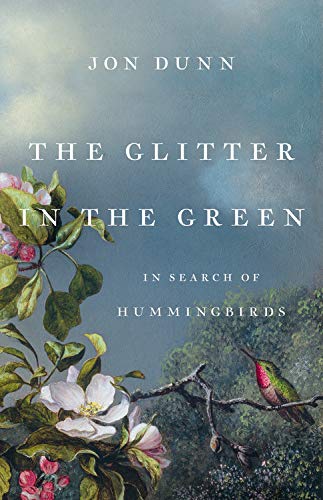
Nature writer Jon Dunn is not lucky enough to see hummingbirds in his native Scotland – hummingbirds are native only to the Americas. As a boy, he becomes fascinated by a display of them at London’s Natural History Museum. Recently, Dunn brokered a plan to see as many of the more than 300 species of hummingbirds as he could, especially the rare or threatened varieties. This takes him the full length of hummingbirds’ 9,000-mile range in the Americas, from the Arctic Circle in Alaska, looking for the Rufous Hummingbird, to a few hundred miles north of the Antarctic Circle in Tierra del Fuego, in search of the Green-backed Firecrown. Lavishly illustrated with his own photographs, the reader can see that Dunn’s magnificent descriptions do not exaggerate the beauty of the birds described. Booklist: “Full of natural history, quotes from early explorers, local history, and adventure, Dunn’s chronicle of his hummingbird quests will make readers just as obsessed with these small, quick birds dipped in rainbows.”
The Social Instinct: How Cooperation Shaped the World | Nichola Raihani
Recommended by the Library's Book Committee. Biologist Raihani looks at where and how collaborative behavior emerges throughout the animal kingdom, and what problems it solves. Scientific American: “...in her energetic analysis, Nichola Raihani recontextualizes cooperation within the framework of evolution and reveals the competition for survival that still bubbles below its surface....offering insight into how our hardwired drive to cooperate could help us meet the challenges rushing at us, from pandemics to climate change.” Raihani reveals that the species that exhibit cooperative behavior—teaching, helping, grooming, and self-sacrifice—most similar to our own tend not to be other apes; they are birds, insects, and fish. Her case studies from the animal world, including meerkats and bluestreak cleaner wrasse, sound fascinating.
For lovers of science and lovers of adventure, Edith Widder’s memoir of her life in the darkest parts of the ocean will not disappoint. As a marine biology student, Widder becomes fascinated by bioluminescence, heretofore little explored. She trains as a submersible pilot and into the depths she goes. There she finds a glittery spectacle – lights coming from animals no human had ever seen. Booklist declares, “A superbly captivating writer, Widder fluently elucidates complex scientific inquiries and findings pertaining to how bioluminescence helps marine species thrive in the watery realm where “there’s nothing to hide behind.” She also renders the ludicrous, the terrifying, and the enthralling with equal vim and vigor.
The Brilliant Abyss: Exploring the Majestic Hidden Life of the Deep Ocean and the Looming Threat that Imperils It | Helen Scales
Most of the oceanic creatures we have identified occupy the “sunlit zone” which extends to 660 feet below the surface of the water. Below that is the deep sea, comprised of “twilight zone” where some light filters through to depths of about 3300 feet, and the abyss, from 3300 feet and beyond where light gives way to complete darkness. The deep sea makes up more than 95 percent of the Earth’s biosphere. “Everything else—the forests and grasslands, rivers and lakes, mountains, deserts, and shallow coastal waters—is collectively outstripped in terms of sheer volume by those colossal reaches of the oceans that lie below the blue surface.” With this remarkable fact, Helen Scales explains our current understanding of life in the deep sea and its importance to the health of our planet. Writing for The New Statesman, Tim Flannery says “In the first half of her book, Scales does an excellent job of animating the almost unbelievable panoply of life in the deep...But it is the second part of her book, devoted to the human impacts on the abyss, which brought gasps to my throat . . . It is hard to imagine a more timely or important book than The Brilliant Abyss.”
Time's Witness: History in the Age of Romanticism | Rosemary Hill
This one hasn’t been published in the United States but the reviews from England were quite positive. The Literary Review called it “an engaging and densely detailed scholarly tome that reads a bit like a love letter, or at least an expression of infectious intellectual enthusiasm.” The TLS: “Hill has accumulated a vast amount of detailed material and organized it impeccably into a witty and intelligent narrative which is both erudite and readable. If only all history was written this well.” Closer to home, a satisfied Library member recently told us in an email that it “promises to be a classic!”
Time’s Witness is a history of history in the Romantic Age, showing how the discipline was influenced by antiquaries between the late 18th-century and the mid-19th century. During this time, the usual grand narratives of kings and statesmen gave way to a new interest in the lives of ordinary people. Oral history, costume history, the history of food and furniture, architecture, theatre, and more were explored as never before. Antiquarianism, the study of the material remains of the past, was not new, but now hundreds of men - and some women - set about rediscovering their national histories, bringing a new imagination to the study of history.
Recommended by our Book Committee. Archaeologist Cat Jarman uses a carnelian bead found in a Viking mass grave in Repton, England, as the keystone for a story about the Vikings that most readers, even the most ardent Viking aficionado, will be unaware of. The stone of that bead is Asian, likely Indian, and the Vikings travels eastward, through eastern Europe and into Asia, get a full treatment in Jarman’s book. Although this is based on her PhD research, this is no dry academic book. Writing in The Financial Times, William Dalrymple says “Jarman likes her Vikings violent, and her tale — replete with witches, human sacrifice, Greek fire and funeral orgies — is at least as lively as any Netflix Viking romp, and a great deal more intellectually satisfying…But the book — one of the most thrilling works of archaeological detective work I have ever read — will cast a spell on any reader who enjoys their history well-written and clearly argued…Jarman shows how the westward trading and slaving voyages of the Vikings were only half the story. The real source of Viking wealth lay far to the east.”
The British Parliament abolished the transatlantic slave trade in 1807, before any other nations. Many previous histories would signal this as the end of slavery in the empire and a new moral outlook of the British people to end slavery in other countries. Still, it was only trade that was banned – nearly 700,000 enslaved people still toiled in British colonies until the practice was ended 25 years later. The Interest corrects the record and reveals the lengths to which British leaders went to defend the indefensible in the name of profit, showing that the ultimate triumph of abolition came at a bitter cost and was one of the darkest and most dramatic episodes in British history. And upon the institution’s cessation, it was the slave holders who were compensated, not the enslaved. The Guardian calls The Interest “scintillating” and “compulsively readable” and concludes “As this timely, sobering book reminds us, British abolition cannot be celebrated as an inevitable or precocious national triumph. It was not the end, but only the beginning.”
Booklist: “Southon illuminates the violent side of Roman life. From politics to gladiators to poison, magic, and execution, death was a constant presence in the Republic and the Empire. Despite the vicious and sometimes tortuous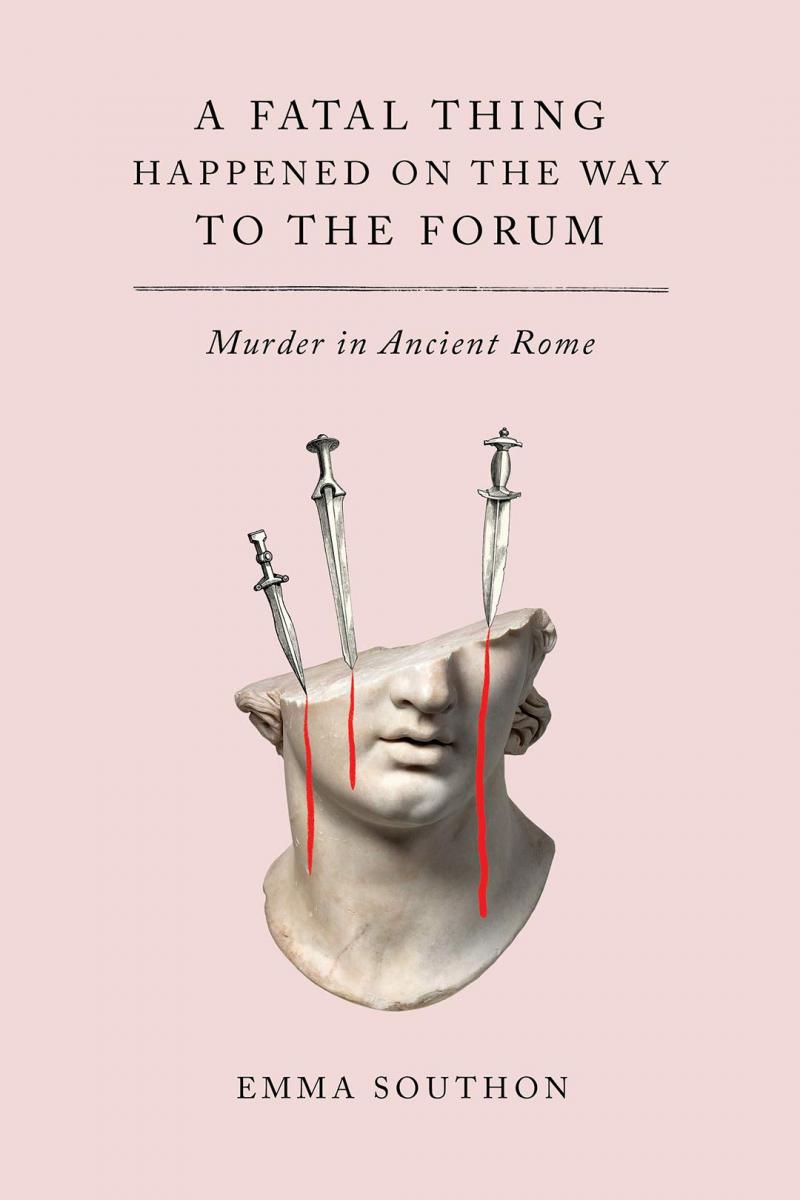 events described, the tone of the book is friendly and conversational...Brutal, graphic, amusing, and enthralling, this work is a must-read for true crime fans as well as history lovers.” Publisher’s Weekly: “Southon works in intriguing history lessons about Roman law, politics, marriage, and sport.” The author holds a PhD in Ancient History from the University of Birmingham.
events described, the tone of the book is friendly and conversational...Brutal, graphic, amusing, and enthralling, this work is a must-read for true crime fans as well as history lovers.” Publisher’s Weekly: “Southon works in intriguing history lessons about Roman law, politics, marriage, and sport.” The author holds a PhD in Ancient History from the University of Birmingham.
The Ground Breaking: An American City and its Search for Justice | Scott Ellsworth
In 1921, Greenwood, an affluent Black neighborhood in Tulsa, was destroyed by mobs of white Oklahomans. The event was the subject of Ellsworth’s 1992 book, Death in a Promised Land: The Tulsa Race Riot of 1921. While researching that book, he found primary sources distressingly scarce—official records purged, and survivors discouraged from speaking about their experiences. The publication of Death in a Promised Land brought on a painful “reckoning process” in Tulsa and in his new book, he details his and others' work to locate the graves of people who died in the massacre and to engage the community in telling the massacre's painful stories. The Ground Breaking was longlisted for the National Book Awards and appeared on several notable books lists throughout the year.
Unsung: Unheralded Narratives of American Slavery & Abolition (Penguin Classics / Schomburg Center for Research in Black Culture; Michelle D. Commander, ed.)
Drawn from the Schomburg Center’s unparalleled holdings, Unsung gathers well-known documents by abolitionists alongside lesser-known life stories and overlooked or previously uncelebrated accounts of the everyday lives and activism from the slavery era. The documents include firsthand chronicles, published speeches, court proceedings and more. Collectively they make the case for Black people as agents and architects of their own lives and their ultimate liberation. Kirkus: “As comprehensive a collection as now exists and one that should be required reading.”
Strathern has written popular works on Da Vinci, Machiavelli, the Borgias, the Medici, and Venetians. In his latest book he has crafted an accessible history of Renaissance-era Florence. Publisher’s Weekly: “Buoyed by incisive details and a brisk pace, this is a welcome introduction to the city and the personalities behind the Renaissance.”
Here is another one for those who like historical true crime. Although the 1932 kidnapping of aviator Charles Lindbergh's baby was a worldwide sensation, it was only one of an estimated three thousand ransom kidnappings that occurred in the United States that year. The targeted victims were often among the most prominent families in America, and during the Great Depression "Recent Kidnappings in America" was a regular feature in the New York Times, while Time magazine included kidnappings in its weekly list of notable births, deaths, and other milestones. As kidnappings increased, confidence in local law enforcement waned. President Roosevelt responded by expanding the powers of the federal government to fight interstate crime. J. Edgar Hoover and his G-men were unleashed (and Hoover's ruthless ambition grew), and law enforcement in the United States modernized in its response to the “snatch racket.” This rarely discussed chapter in American underworld history is well-told by Carolyn Cox, a retired lawyer and former adjunct professor at Georgetown University Law Center and American University Law School.
The Gun, the Ship, and the Pen: Warfare, Constitutions, and the Making of the Modern World l Linda Colley
Kirkus: “In this wildly ambitious, prodigiously researched work, Princeton history professor Colley traces how the proliferation of written constitutions coalesced with the rise of hybrid warfare... The narrative ranges widely and fascinatingly across continents and prominent historical figures, from Pasquale Paoli in Corsica to Simón Bolívar in South America to George Washington in the nascent U.S....and Europe, during the Napoleonic era. Especially groundbreaking is Colley’s study of the written documents of non-European nations—e.g., Haiti—and in far-flung locales like the South Pacific island of Pitcairn...A sweeping, unique, truly world-spanning political and military history.“ The Guardian: “As with all great history books, the big picture is here, but so is the telling detail, the astute comparison, the arresting and memorable turn of phrase, the suggestive moral for our own times.”
Henry 'Chips' Channon: The Diaries Volume 2 1938-43 (Simon Heffer, ed.)
The US release of the first volume in this new edition of Channon’s diaries caused quite a stir, circulating almost constantly since its arrival at the Library in early 2021. Volume two was released in the UK in the fall and was quietly added to our shelves shortly thereafter. If you enjoyed volume one, you are sure to be thrilled about the second volume, which chronicles the years from the Munich Agreement into WWII.
The dramatic story of how Alan Turing and his team decrypted the toughest Nazi code with a one-of-a-kind machine known as Colossus, the world's first digital electronic computer. Colossus was able to crank out decryptions 500 times faster than any machine that preceded it and was instrumental in the success of the invasion of Normandy and ending the war. Library Journal: “Incredibly well-written and well-researched, this fast-paced book reads like a novel.” A Society Library member who has read prolifically on WWII espionage, code-breaking, and intelligence, wrote in an email that “I very much enjoyed David Price’s book. He really has insight (as well as up-to-date research) into the whole Bletchley Park saga. I learned a great deal... Price has the ability to communicate technical material very clearly...It was a great read.”
Mission France: the True History of the Women of SOE | Kate Vigurs
For the first time, Kate Virgurs tells the stories of all thirty-nine female agents who participated in Special Operations Executive efforts to coordinate Resistance work during WWII. The Scotsman: “a clear appraisal of SOE strategy in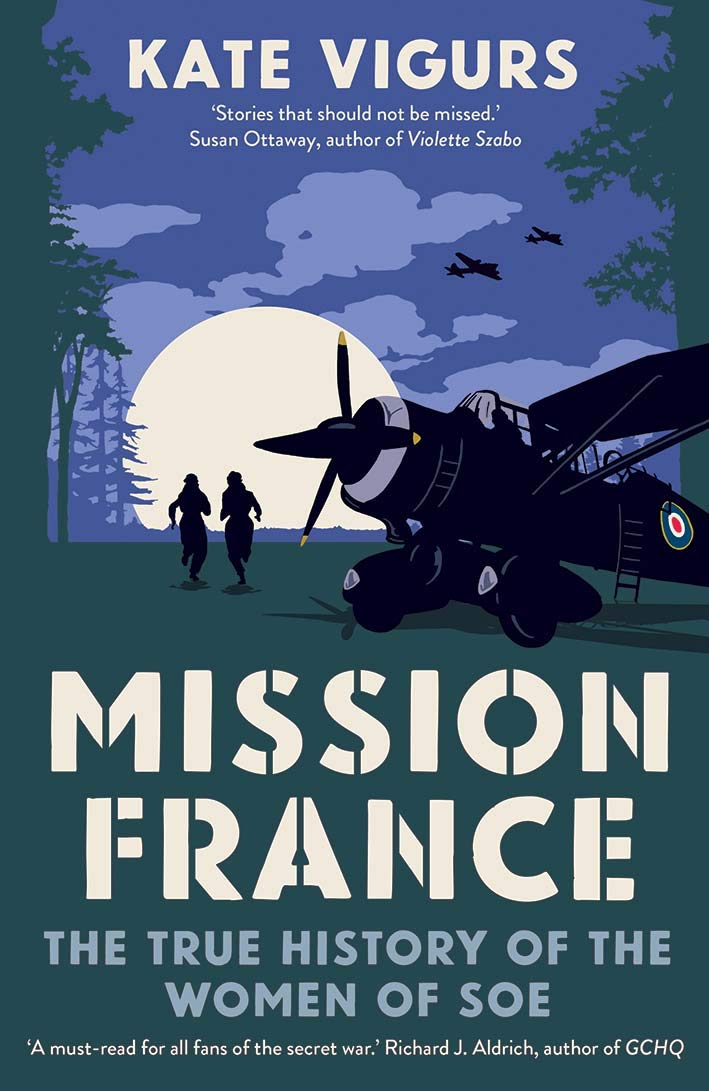 France [followed by] the major part of the book, vibrant with anecdote and detail, which covers the tactical work of all the women and what happened to them.” The book goes to great lengths to highlight the heroism of women forgotten and overlooked in most published histories of SOE. Published by Yale University Press.
France [followed by] the major part of the book, vibrant with anecdote and detail, which covers the tactical work of all the women and what happened to them.” The book goes to great lengths to highlight the heroism of women forgotten and overlooked in most published histories of SOE. Published by Yale University Press.
Sheer Misery: Soldiers in Battle in WWII | Mary Louise Roberts
“A tightly focused, graphic illustration of the many ways that war is hell.”—Kirkus. Mary Louise Roberts, Professor of History at the University of Wisconsin-Madison, uses diaries and letters to set a humane and unsparing eye on the corporeal experiences of common soldiers in WWII, revealing the day-to-day rigors of war. She focuses on three campaigns: winter 1943-44 in the Italian mountains, summer, 1944, in Normandy, and the 1944-45 winter battles in northwest Europe. This is not for the squeamish WWII buff: words like “graphic,” “powerful,” “brutal,” and “vivid” appear regularly in reviews.
The American War in Afghanistan: A History | Carter Malkasian & The Afghanistan Papers: A Secret History of the War | Craig Whitlock
Malkasian is an Oxford-trained historian and former Special Assistant for Strategy to the Joint Chiefs of Staff with extensive experience working in Afghanistan. In his third book he offers an authoritative, comprehensive history of the longest armed conflict in U.S. history. Kirkus: “a sweeping, deeply researched account that will gratify specialists and nonspecialists alike.” Publisher’s Weekly: “a refreshingly nuanced and well-informed perspective.” In The Afghanistan Papers, journalist Craig Whitlock uses recently unearthed government documents related to the war to present a "searing indictment of the deceit, blunders, and hubris of senior military and civilian officials" (NPR). The revelations offered in the book are shocking and tragic.
Magdalena: River of Dreams | Wade Davis
The Magadena River is Colombia’s lifeline, flowing almost one hundred miles north from the Andes to the Caribbean. Often a setting in the novels of Gabriel García Márquez, the river’s current champion is the Canadian anthropologist Wade Davis. On its face, this is a travelogue from the source to the mouth, but the result is much more. The Guardian:
"Madgalena is a geography book about a river that is also a political history of Colombia, an admonition of ecological disaster, an impassioned defence of indigenous wisdom, and a memoir of the author’s various travels and friendships over the years... Its three sections – 'Alto,' 'Medio' and 'Bajo Magdalena' – promise a smooth linear ride downriver, but the text is full of mysterious eddies and crosscurrents. In his summary, Magdalena is 'less a work of scholarship than a compendium of stories shared by Colombians encountered along the river and beyond.' These 'living narratives' are the heart of a book whose final purpose is to 'celebrate the true wonder of a country that has long been overlooked and misunderstood'."
Tim Parks has long been a favorite of readers at the Library. His output includes a little something for everyone, including novels, essays, translations. Though famous enough for all of these, he’s likely best known for his books about Italy, his adopted home. In The Hero’s Way, Parks retraces the route of Giuseppe Garibaldi and his army along the Appenines. But Parks does more than describe charming mountain towns. He uses the trek to paint a picture of contemporary Italy that isn’t always complimentary. Publisher’s Weekly says, “Contrary to Garibaldi’s vision of generous, liberal solidarity, Parks’s Italy often feels atomized, alienated, and resentful of immigrants. Even so, Parks’s elegant, wry prose saves the story from tipping into despair. This gripping account of Italy’s visionary past serves as a revealing window into its clouded present”
A recent addition to our travel guide series holdings, the Library has seven volumes: New Jersey, The Catskills, Connecticut, and other nearby locations.
Far from Respectable: Dave Hickey and his Art | Daniel Oppenheimer
This is the first book on the critic and essayist Dave Hickey. Hickey’s controversial critiques of the art establishment are still relevant (and fun to read) today, whether you agree or disagree with his arguments. (We have several for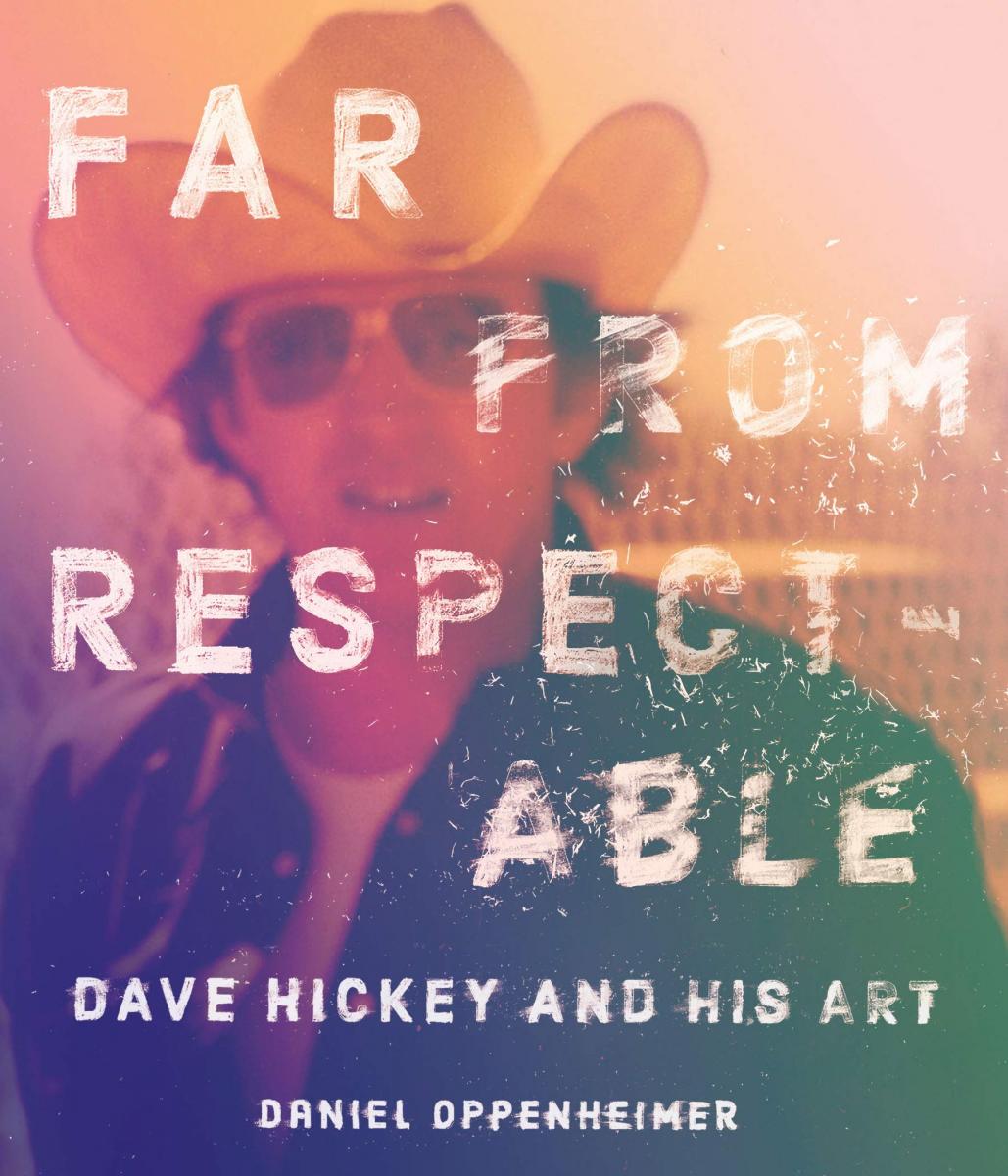 you on stack 12.) Far From Respectable uses extensive in-person interviews with Hickey, his friends and family, and art world comrades and critics. Hickey’s life was a sprawling, messy thing, from gallerist and art-world heavy to surfer and country music songwriter, to tenured professor. He remained a committed hedonist throughout and fought what he saw as the dullness and complacency of art world careerists passionately. Published by University of Texas Press.
you on stack 12.) Far From Respectable uses extensive in-person interviews with Hickey, his friends and family, and art world comrades and critics. Hickey’s life was a sprawling, messy thing, from gallerist and art-world heavy to surfer and country music songwriter, to tenured professor. He remained a committed hedonist throughout and fought what he saw as the dullness and complacency of art world careerists passionately. Published by University of Texas Press.
Sophie Taeuber-Arp: Living Abstraction (Anne Umland and Walburga Krupp, eds.; Museum of Modern Art) & Sophie Taeuber-Arp and the Avant-Garde | Roswitha Mair
“Sophie Taeuber-Arp: Living Abstraction” is currently on-view at MoMA. It is the first exhibition of Taeuber-Arp's work in the United States in nearly 40 years and covers the stunning breadth of her career: as an important member of the Dadaist movement and, with Mondrian and Malevich, a pioneer of Constructivism; as a maker of textiles and designer of murals, stained glass windows, furniture, interiors, and buildings; as a painter-sculptor, magazine editor, and early champion of geometric abstraction. Roswitha Mair’s recent book is the first biography of Tauber-Arp, chronicling the author’s life as well as the various milieux and movements in which she traveled.
This series, begun in 2018, focuses on masterpieces in the Frick collection. Each slim volume (65 – 85 pages) is devoted to one work and features an essay by a Frick curator paired with a contribution from a contemporary artist or writer. Contributors include Edmund de Waal, Hilary Mantel, James Ivory, and Maira Kalman. Featured works include Rembrandt's Polish Rider, Vermeer’s Mistress and Maid, Holbein’s Sir Thomas More. Look for more volumes in 2022.
Charney is the author of several books on art theft and forgery. The Devil in the Gallery presents a guided tour of the history of art through its scandals and rivalries, each of which, he argues, resulted in a positive step forward for art in general and, in most cases, for the careers of the artists in question. Library Journal: “an in-depth look at varied time periods and artists, which readers interested in gossip, drama, or art history will enjoy.”
Chasing Me to My Grave: An Artist's Memoir of the Jim Crow South | Winfred Rembert, as told to Erin I. Kelly
Kirkus: “Rembert (1945-2021) was raised by a great aunt in rural Georgia, and he spent his childhood working with her in the cotton fields. In the 1960s, he participated in the civil rights movement, and, after one violent crackdown at a protest, stole a car to flee two White men chasing him with shotguns. Soon arrested and stuck in jail for nearly two years awaiting trial, he escaped, only to be caught that night by a violent White mob...he survived being ‘almost lynched’...and was given a 27-year term in state prison.” While serving time, Rembert learned how to tool and dye leather, and at 51 began creating autobiographical works of art using his skills. Booklist: “This is a book like no other, from Winfred Rembert’s unique and uniquely powerful autobiographical paintings to his disturbing and courageous life story, frankly told.” Library Journal: “visually and narratively stunning.”
Ray Johnson c/o (edited and curated by Caitlin Haskell, with Jordan Carter; Art Institute of Chicago)
Writing in the New York Times in 1965 about a retrospective gallery show of his work, Grace Glueck declared that “Ray Johnson...may well be New York’s most famous unknown artist.” This encapsulates the contradictions inherent in Johnson. He was friendly and competitive with the foremost Pop artists of the day, but the retrospective Glueck wrote about was his first gallery show. Most of his works were collages, sent via US mail to the famous and infamous alike, but not displayed on museum walls. Since his death in 1995, all of this has begun to change. Ray Johnson c/o is one man’s collection of his correspondence from Johnson. Declaring it one of the best art books of 2021, Holland Cotter calls it a “gold mine of a book... Funny, biting, morbid, it’s a page-turner for sure, and accompanies a show at the Art Institute of Chicago through March 22.”
The Medici: Portraits and Politics, 1512-1570 (Keith Christiansen and Carlo Falcian, eds.; Metropolitan Museum of Art)
This exhibition catalogue accompanies a show of Renaissance portraits at the Metroplitan Museum focusing on portraiture produced in 16th-century Florence under Medici family rule. Introductory essays offer historical and cultural context, and shorter essays on the exhibition's themes follow. Topics include the politics and lineage of the Medici rulers; debate over the use of vernacular Italian vs. Latin; Dante and Petrarch and their relation to Renaissance art. Most importantly, the catalogue is heavily illustrated, with descriptive entries accompanying each object in the exhibition (including oil paintings, drawings, sculptures, pages from books, and medallions).
Inspired by the East: How the Islamic World Influenced Western Art (William Greenwood and Lucien de Guise, eds.)
Inspired by the East spans the late fifteenth century to the present day, and sheds light on the complex cultural exchange that inspired so many artists, architects, and designers through the centuries. The catalog was published to accompany a major exhibition at the British Museum in London and the Islamic Arts Museum Malaysia in Kuala Lumpur.
Beeswing: Losing My Way and Finding My Voice, 1967-1975 | Richard Thompson
Singer-songwriter/guitar innovator Richard Thompson’s Beeswing is a must-read for fans of rock and roll from the late 1960s-early 1970s, especially the sounds of British folk-rock, a sub-genre that Thompson’s band Fairport Convention helped create (or perhaps wholly created). Many rock and roll memoirs are hedonistic, boastful things, and at their worst dully predictable. Beeswing offers a fresh change, and is much like Thompson’s guitar playing: no flashy histrionics, economical, smart, a distinctive voice quietly drawing you in. He also seems one of the few reliable witnesses to the much-covered world of late '60s-early '70s London rock and roll. Booklist: “Just as he has a knack for lyrics, Thompson has a way with words on the page, offering colorful portraits of his contemporaries and collaborators... Thompson’s humor and insight also shine. He evocatively recreates a time and place, and his memoir leaves you wanting more.” Library Journal: “Like a great Richard Thompson solo, this title contains surprise, beauty, delight, and a voice like no other.” Wall Street Journal: “Honest and opinionated, forthcoming about both his technique and creative process, but discreet.”
The Piano: A History in 100 Pieces | Susan Tomes
Susan Tomes is an acclaimed concert pianist and writer. Her new book was featured in Best of 2021 lists in the Spectator and the Financial Times. The pieces that Tomes uses to illuminate the history of the piano span the late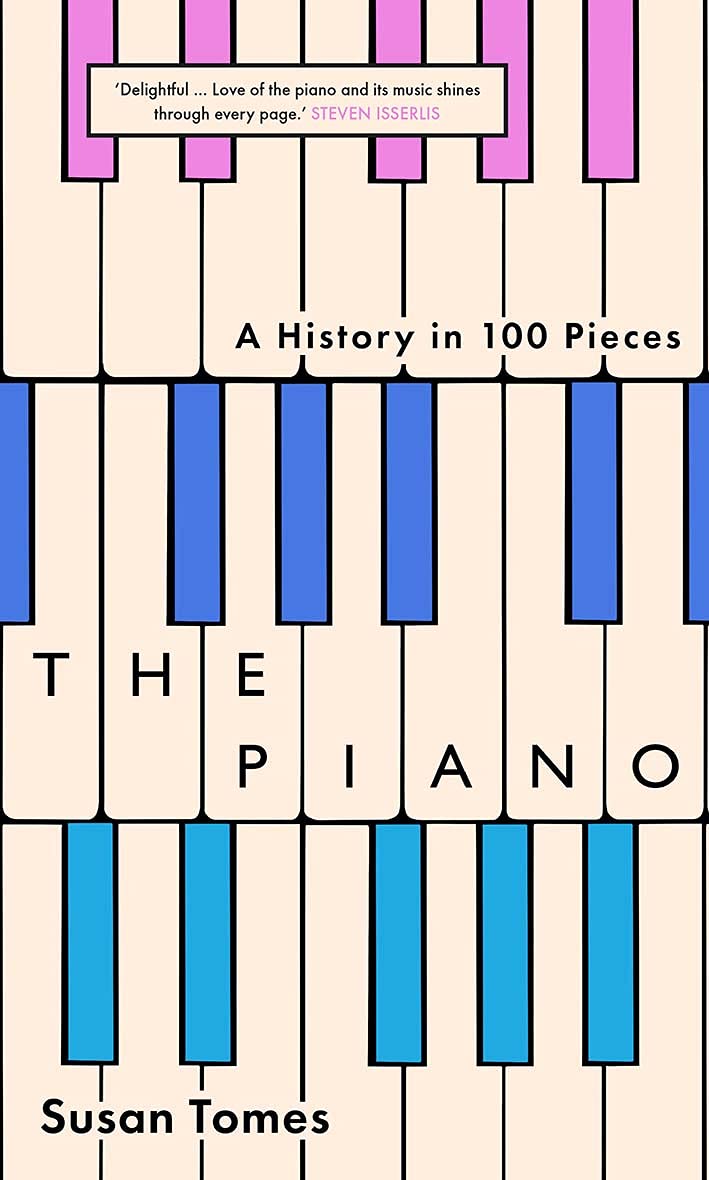 eighteenth century to the present day, across genres and styles. Bach, Mozart, Beethoven, Schumann, Tchaikovsky, Debussy, Bill Evans, Gershwin, Scott Joplin, Art Tatum, and Philip Glass are among those featured, as well as neglected women composers and players including Fanny Mendelssohn, Maria Szymanowska, Clara Schumann, and Amy Beach.
eighteenth century to the present day, across genres and styles. Bach, Mozart, Beethoven, Schumann, Tchaikovsky, Debussy, Bill Evans, Gershwin, Scott Joplin, Art Tatum, and Philip Glass are among those featured, as well as neglected women composers and players including Fanny Mendelssohn, Maria Szymanowska, Clara Schumann, and Amy Beach.
Naked Screenwriting: Twenty-two Oscar-winning Screenwriters Bare Their Secrets to Writing | Lew Hunter
Lew Hunter is a screenwriter, author and chairman Emeritus and Professor of Screenwriting at UCLA. His author bio makes the amazing claim that “over half of the Oscar-winning scripts over the past twenty years have been written by students of Hunter.” Naked Screenwriting includes interviews conducted at Hunter’s graduate course. Interviewees include Francis Ford Coppola, Billy Wilder, Oliver Stone, William Goldman, Julius Epstein, Alexander Payne, Jim Taylor, Ruth Prawer Jabvola, Eric Roth, and Callie Khouri. Publisher’s Weekly calls it “a treasure trove for Hollywood historians and aspiring screenwriters alike.” (The Library has several more books compiling interviews with screenwriters.)
Long Players: Writers on the Albums That Shaped Them | Tom Gatti, ed.
A quick glance at the table of contents tells the story: Rachel Kushner on the Gun Club, Teju Cole on Mos Def, Clive James on Duke Ellington, Deborah Levy on David Bowie, Ian Rankin on John Martyn, Bernardine Evaristo on Sweet Honey in the Rock, Colm Tóibin on the Johnstons, and more.
Being a Ballerina: The Power and Perfection of a Dancing Life | Gavin Larsen
Gavin Larsen Was a professional ballet dancer for 18 years before retiring in 2010. A principal dancer with the Oregon Ballet Theatre, she also danced with the Suzanne Farrell Ballet and Alberta Ballet and as a guest artist with Ballet Victoria. Her memoir introduces readers to teachers and dancers she has known, and discusses the roles she inhabited and companies she worked for as a professional dancer. The reviews of Being a Ballerina have been filled with praise. Kirkus: “A lovely debut that’s relatable, engaging, and unafraid to show vulnerability. A thorough, evocative, and deeply reverent remembrance.” The New York Times called it “luminous” and “poignant” and successful as “both a personal account and a universal take on the life of a professional ballet dancer.” Dance Magazine: “Larsen’s memoir oftentimes reads more like a novel than an autobiography...dropping the reader..directly into the everyday agonies and ecstasies of a life in dance.” In a starred review, Library Journal writes that “there is power and perfection in this captivating memoir—the power of personal experience and the perfection of writing that carefully captures the life of a dancer.”
The remarkable, complex, and little-known story of the groundbreaking 1921 all-Black musical “Shuffle Along” is brought to life in this deeply-researched book. Booklist: “The book excels in describing the historical moment, seamlessly discussing a wide range of issues...while also portraying the glamour of the time by introducing such "Shuffle Along" players as Josephine Baker, Paul Robeson, and Florence Mills, among others. Evocative and illuminating, Footnotes is an excellent addition to the canon of musical theater history.”
